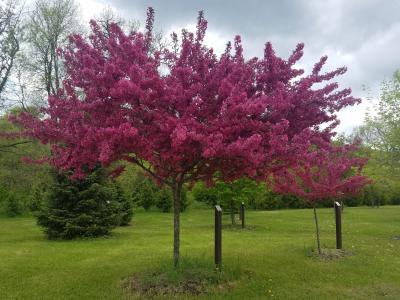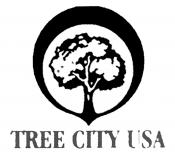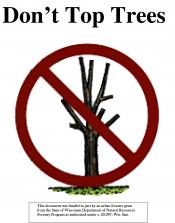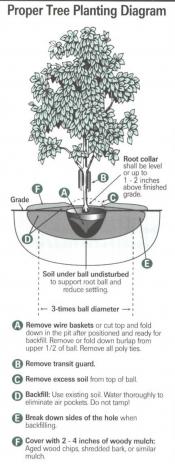
Dr. Fred H. Koenecke Arboretum
The City Arboretum was established in 2003 with matching funds from an Urban Forestry DNR Grant. From this grant, 134 trees were planted. Since the initial planting, the arboretum has been expanded to include 200 trees and shrubs, with 65 different varieties.
The arboretum is located on Hwy 14 near the City Utilities’ Waste Water Treatment Facility next to the Pine River. It is designed for self guided tours 7 days per week. Each tree is labeled with a brief explanation. For more information, Call 647-8108 Ex. 2.
This project is funded by a group effort under an Urban Forestry Grant, local donations, volunteer work and the City of Richland Center.
Community Forest
The City of Richland Center owns and manages 450 acres of forest surrounding the city. In 2008, the Forest was enrolled in the State Community Forest Program giving the City services from the State to aid in management, technical assistance, planting and harvesting. Sites include the Landfill, the land overlooking Rockwell Automation, the Cemetery, the North Industrial Park and the river forest to the north of the North Industrial Park bridge.
Pine River Bottoms
Bottomland hardwoods are potentially some of the most productive woods in Wisconsin. Located on deep silt loam soils that have been deposited along the banks of the Pine River as a result of frequent flooding. Management can be difficult as the timber species that grow in the bottoms tend to be lower value species. Logging can be difficult because of the flooding. Frozen ground is generally the best time to log. Other difficulties include an invasive exotic reed canary grass which can invade the understory of these stands & prevent young trees from growing. The emerald ash borer has the potential to effect the bottoms by killing one of the most common trees found there, the green ash.
Bowen Bottoms
These bottoms are located near the Bowen Cemetery in the North Industrial Park & are comprised of two stands:
#16- A sawlog bottomland hardwood stand. Trees common to this stand are silver maple and green ash. Box elder, elm and cottonwood can also be found. 49 acres.
#18- Patches of young trees and reed canary grass. Silver maple are invading this stand. 88 acres.
Wedgewood Bottoms
These bottoms are located behind Doudna Elementary & are comprised of two stands:
#17- A large, scattered sawlog bottomland hardwood stand with 30 year old pole timber. Trees common to this stand are elm, box elder, green ash, silver maple & cottonwood. 10 acres.
#18- Patches of young trees and brome grasses with some common forbs. Box elder trees are invading this stand. 88 acres.
EAB Confirmed in Marquette, Richland Counties for First Time
Contact: Donna Gilson, 608-224-5130, donna.gilson@wi.gov
Bill Cosh, Communications Director, 608-224-5020, william2.cosh@wisconsin.gov
MADISON – Marquette County will become the 38th Wisconsin county to be quarantined for emerald ash borer, following discovery of the tree-killing beetle in the Town of Montello there. In addition, EAB has been confirmed for the first time in Richland County in the town of Dayton.
Marquette County will now be placed under quarantine.
Richland County has been under quarantine for EAB since July 2014, so this new find does not change anything from a regulatory standpoint there. Four counties – Lafayette, Iowa, Green and Richland — were quarantined in 2014 because they were surrounded by counties where EAB had been found, and it was likely EAB was present there in low numbers that are difficult to detect. EAB has now been confirmed in all of those counties except Iowa. Actually confirming the presence of EAB should alert residents that it is more important than ever not to move firewood from the county to non-quarantine areas, officials say.
Both new EAB detections resulted from routine trap monitoring. In Richland County, staff from the Wisconsin Department of Agriculture, Trade and Consumer Protection found two adult beetles July 28 in a trap along Highway 14 in the Town of Dayton, about five miles west of Richland Center. There are a few ash trees in the immediate area, and they show symptoms of EAB infestation.
U.S. Department of Agriculture staff found one adult beetle July 29 in a Marquette County trap along Cotters Bay Road in the Town of Montello, about a mile west of the city of Montello. The level of EAB activity there has not been determined yet.
Quarantines prohibit ash wood products and hardwood firewood from being moved to areas that are not quarantined. For businesses handling wood products that could carry EAB, this means that they must work with DATCP to assure that they are not transporting the pest to non-quarantine counties. For private citizens, a quarantine means that residents may not take firewood from these counties to non-quarantine counties.
“We strongly discourage moving firewood even within quarantine areas,” said Brian Kuhn, Plant Industry Bureau Director in the Wisconsin Department of Agriculture, Trade and Consumer Protection. “The vast majority of EAB infestations have resulted from the movement of firewood, as evidenced by the number of times our first find in a given county has been in campgrounds. Most of the quarantined counties are not generally infested, so moving firewood within them could bring the pest to new areas in the county that would otherwise remain uninfested for several years.”
Kuhn notes that other forest pests and diseases also move easily and invisibly from one location to another under the bark of firewood.
DATCP recommends that property owners who have ash trees in quarantine counties:
- Keep a close watch for possible signs of EAB infestation: Thinning canopy, D-shaped holes in the bark, cracked bark, branches sprouting low on the trunk, and woodpeckers pulling at bark.
- Consider preventive treatments if your property is within 15 miles of a known infestation.
- Consider planting different species of trees that are not susceptible to EAB.
- Call a professional arborist, and visit Emerald Ash Borer website for detailed information.
Emerald ash borer is native to China and probably entered the United States on packing material, showing up first in Michigan in 2002. It was first found in Wisconsin in 2008 in Ozaukee County.
Other quarantined Wisconsin counties are Adams, Brown, Buffalo, Calumet, Columbia, Crawford, Dane, Dodge, Door, Douglas, Fond du Lac, Grant, Green, Iowa, Jefferson, Juneau, Kenosha, Kewaunee, La Crosse, Lafayette, Manitowoc, Milwaukee, Monroe, Oneida, Outagamie, Ozaukee, Racine, Rock, Sauk, Sheboygan, Trempealeau, Vernon, Walworth, Washington, Waukesha and Winnebago.
EAB adults lay eggs on the bark of ash trees in mid- to late summer. When the eggs hatch a week or two later, the larvae burrow under the bark for the winter and feed, forming the characteristic S-shaped tunnels and destroying the tree’s ability to take up nutrients and water. The following summer, the adults emerge through D-shaped holes in the bark.
The Wisconsin Emerald Ash Borer Program includes DATCP; DNR; UW-Madison; UW-Extension; USDA Forest Service and Animal and Plant Health Inspection Service.





